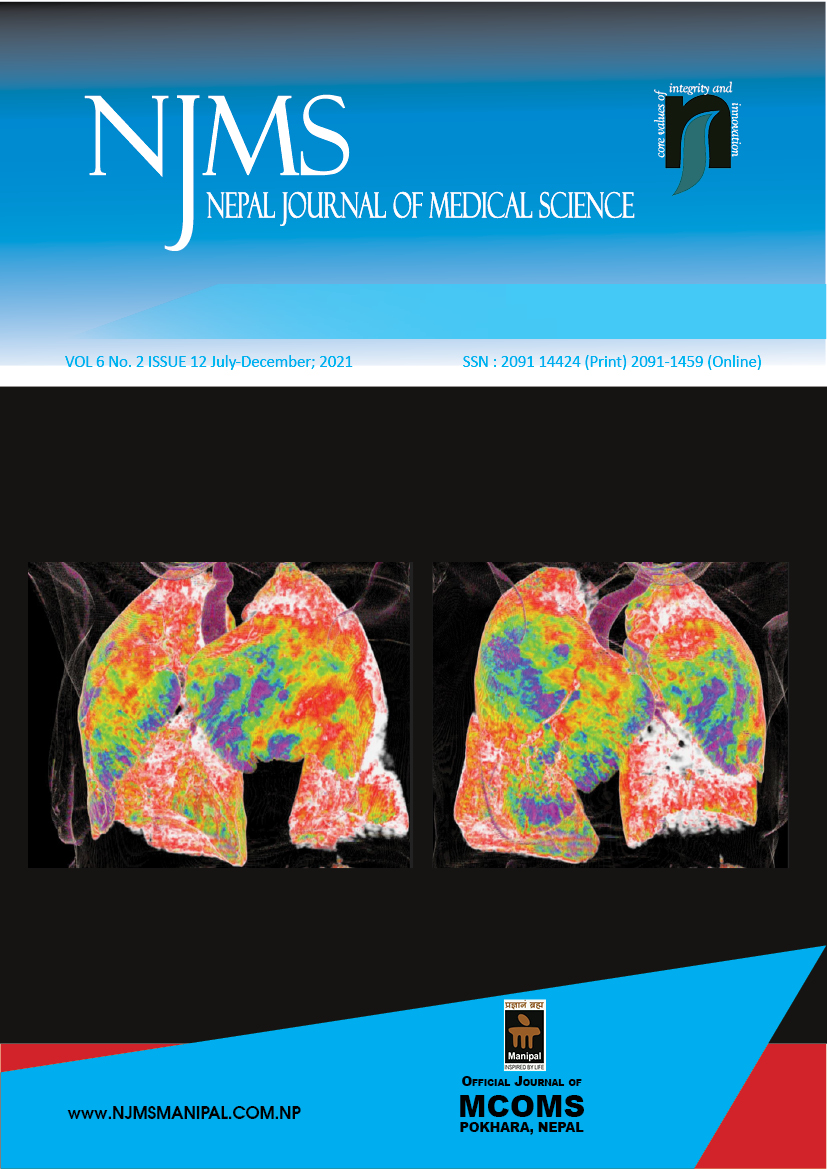Result of Percutaneous Release of Trigger Thumb: A Prospective Study
DOI:
https://doi.org/10.3126/njms.v6i2.42531Keywords:
Pain, Thumb, Trigger Finger DisorderAbstract
Introduction: Trigger thumb is a common disorder characterized by pain, snapping, and locking of fingers. It usually affects the ring and thumb finger. The treatment of trigger thumb varies according to the grade of triggering. Open surgical release of A1 pulley in trigger thumb is a widely accepted treatment method having its complications like scar mark, pain at the incision site, joint stiffness, and digital nerve injuries. The percutaneous release does have good results in recent studies. It is an easy daycare procedure with low complications.
Methods: This study includes 28 patients with trigger thumbs who underwent percutaneous release. Patients were followed up for 6 months duration.
Results: There were 30 patients included in the study, only 2 patients required open release so we had an overall 93.33% success rate of percutaneous release. There was no clinical evidence of complications and nerve injury.
Conclusion: The percutaneous release is a safe and effective outpatient procedure in patients with trigger thumbs.
Downloads
Downloads
Published
How to Cite
Issue
Section
License
Copyright (c) 2022 Nepal Journal of Medical Sciences

This work is licensed under a Creative Commons Attribution 4.0 International License.
Copyright © by Nepal Journal of Medical Sciences. The ideas and opinions expressed by authors of articles summarized, quoted, or published in full text in this Journal represents only opinions of authors and do not necessarily reflect the official policy of Nepal Journal of Medical Sciences or the institute with which the author(s) is (are) affiliated, unless so specified.




